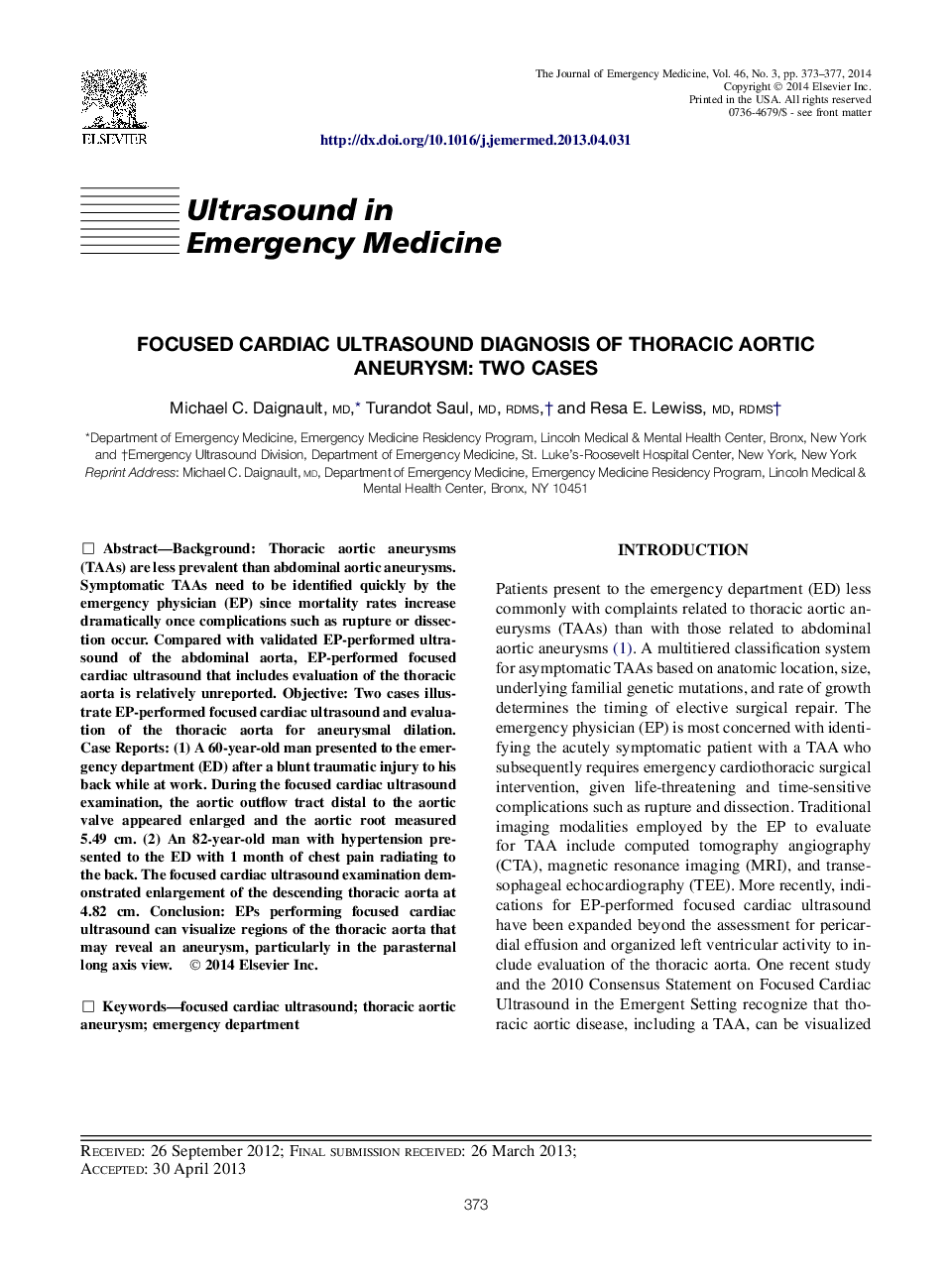| Article ID | Journal | Published Year | Pages | File Type |
|---|---|---|---|---|
| 3247677 | The Journal of Emergency Medicine | 2014 | 5 Pages |
BackgroundThoracic aortic aneurysms (TAAs) are less prevalent than abdominal aortic aneurysms. Symptomatic TAAs need to be identified quickly by the emergency physician (EP) since mortality rates increase dramatically once complications such as rupture or dissection occur. Compared with validated EP-performed ultrasound of the abdominal aorta, EP-performed focused cardiac ultrasound that includes evaluation of the thoracic aorta is relatively unreported.ObjectiveTwo cases illustrate EP-performed focused cardiac ultrasound and evaluation of the thoracic aorta for aneurysmal dilation.Case Reports(1) A 60-year-old man presented to the emergency department (ED) after a blunt traumatic injury to his back while at work. During the focused cardiac ultrasound examination, the aortic outflow tract distal to the aortic valve appeared enlarged and the aortic root measured 5.49 cm. (2) An 82-year-old man with hypertension presented to the ED with 1 month of chest pain radiating to the back. The focused cardiac ultrasound examination demonstrated enlargement of the descending thoracic aorta at 4.82 cm.ConclusionEPs performing focused cardiac ultrasound can visualize regions of the thoracic aorta that may reveal an aneurysm, particularly in the parasternal long axis view.
